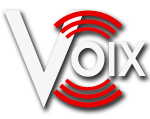Asymmetric Digital Subscriber Line (ADSL) is a form of DSL, a data communications technology that enables faster data transmission over copper telephone lines than a conventional modem can provide. It does this by utilizing frequencies that are normally not used by a voice telephone call, in particular, frequencies higher than normal human hearing. This signal will not travel very far over normal telephone cables, so ADSL can only be used over short distances, typically less than 2 km. Once the signal reaches the telephone company's local office, the ADSL signal is stripped off and immediately routed onto a conventional internet network, while any voice-frequency signal is switched into the conventional phone network. This allows a single telephone connection to be used for both ADSL and voice calls at the same time.
The distinguishing characteristic of ADSL over other forms of DSL is that the volume of data flow is greater in one direction than the other, i.e. it is asymmetric. Providers usually market ADSL as a service for people to connect to the Internet in a relatively passive mode: able to use the higher speed direction for the "download" from the Internet but not needing to run servers that would require bandwidth in the other direction.
For conventional ADSL, downstream rates start at 128 kbit/s (though a minimum offering of 512 kbit/s is more common) and typically reach 8 Mbit/s within 1.5 km (5000 ft) of the DSLAM equipped central office or remote terminal. Upstream rates start at 64 kbit/s and typically reach 128 kbit/s or 256 kbit/s but can go as high as 1024 kbit/s. The name ADSL Lite is sometimes used for the slower versions.
Note that distances are only approximations aimed at consumers of ADSL services. Signal attenuation and Signal to Noise Ratio are defining characteristics, and can vary completely independently of distance (e.g., non-copper cabling, cable diameter). Real world performance is also dependent to the line impedance, which can change dynamically either dependent on weather conditions (very common for old overhead lines) or on the number and quality of joints or junctions in a particular cable length.
A newer variant called ADSL2 provides higher downstream rates of up to 12 Mbit/s for spans of less than 2.5 km (8000 ft). More flexible framing and error correction configurations are responsible for these increased speeds. ADSL2+, also referred to as ITU G.992.5, boosts these rates to up to 24 Mbit/s for spans of less than 1.5 km (5000 feet) by doubling the downstream spectrum upper limit to 2.2MHz. ADSL2/2+ also offer seamless bonding options, allowing lines with higher attenuation or lower signal to noise (SNR) ratios to be bonded together to achieve theoretically the sum total of the number of lines (i.e., up to 50 Mbit/s for two lines, etc.), as well as options in power management and seamless rate adaptation — changing the data rate used without requiring to resynchronize.
Because of the relatively low data-rate (compared to optical backbone networks), ATM is an appropriate technology for multiplexing time-critical data such as digital voice with less time-critical data such as web traffic; ADSL is commonly deployed with ATM to ensure that this remains a possibility. In a triple play scenario, different ATM virtual circuits (VCs) may be allocated for different services.
More recently, network operators are increasingly moving away from ATM, and towards Ethernet-based solutions, where 802.1Q and/or VPLS offer multiplexing solutions. The main reason for this switch is cost savings and the possibility of removing the older and more expensive ATM network.
ADSL service providers may offer either dynamic or static IP addressing. Static addressing is preferable for people who may wish to connect to their office via a virtual private network, for some Internet gaming, and for those wishing to use ADSL to host a Web server.

